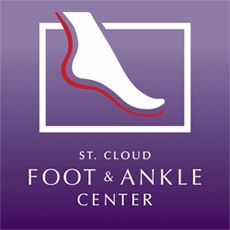 The pain and discomfort from foot deformities like bunions or hammer toes can impact every step you take and impact your mobility and quality of life. At St. Cloud Foot & Ankle Center, our Central Minnesota podiatrists understand the frustration and limitations conditions like these can cause.
The pain and discomfort from foot deformities like bunions or hammer toes can impact every step you take and impact your mobility and quality of life. At St. Cloud Foot & Ankle Center, our Central Minnesota podiatrists understand the frustration and limitations conditions like these can cause.
Our team believes in relying on conservative treatments for foot deformities whenever possible but recognizes that surgical intervention can sometimes be necessary for long-term relief. Our St. Cloud podiatrists created the guide below to help you understand when surgical intervention might be your best path forward.
Signs Your Foot Deformity May Require Surgery
Conservative treatments like custom orthotics, proper footwear, physical therapy, and anti-inflammatory medications work for many patients. However, these treatment options are not always sufficient. It’s important to know how to recognize if surgery might be the appropriate next step for your foot deformity.
Persistent Pain
Pain that persists despite conservative treatments may be the most significant sign that foot deformity surgery may be necessary. When months of non-surgical approaches fail to provide meaningful relief for chronic foot pain, this suggests the deformity has progressed beyond what conservative management can address.
Progressive Worsening
Progressive worsening of the deformity, even with proper footwear and orthotic use, indicates that the structural changes are continuing despite your best efforts. This progression often means the underlying issue requires surgical correction to prevent further deterioration.
Footwear Difficulties
Difficulty wearing off-the-shelf shoes becomes increasingly problematic as deformities advance. When even wide, accommodative footwear causes pain or doesn't fit properly due to the deformity's size or shape, quality of life becomes significantly impacted.
Physical Limitations
Limited daily activities due to foot pain represent a functional decline that merits surgical consideration. When you find yourself avoiding previously enjoyed activities or struggling with basic mobility, the benefits of surgical intervention often outweigh the risks.
Chronic Inflammation or Ulcers
Ongoing inflammation or recurring ulcers in the affected area indicate that the deformity is causing secondary complications that may worsen over time. If the underlying structural problem isn't addressed surgically, complications like these can lead to more serious issues.
Development of Arthritis
When arthritis develops in joints affected by a deformity, this is often a sign that long-term damage is occurring. As cartilage deteriorates and joint spaces narrow, pain typically increases and function decreases, making surgical correction more necessary.
Surgical Approaches for Common Foot Deformities
Understanding the surgical options for specific foot deformities can help you have more informed discussions with your St. Cloud podiatrist about potential treatment paths.
Bunion Surgery
Bunion surgery addresses the painful bump at the base of the big toe through several possible bunion treatment options. Traditional bunionectomy removes the enlarged portion of bone while realigning the joint and correcting the angle between the first and second metatarsal bones. Recovery typically takes 6-12 weeks, with patients gradually returning to normal activities as healing progresses.
Bunion Surgery
Bunion surgery typically involves releasing tight tendons and realigning the affected joints. The procedure may be less invasive for flexible hammer toes, while rigid hammer toes often require joint fusion to permanently straighten the toe. Patients usually experience significant improvement in both appearance and function after recovery.
Flat Foot Reconstruction
When the arch collapses significantly, causing pain and alignment issues throughout the foot and ankle, flat foot reconstruction surgery becomes necessary. This surgery is complex and may involve tendon transfers, bone cuts, or fusions to restore the arch and proper foot mechanics. It often requires a 3-6 month recovery period before returning to full activities.
Tibial Tendon Dysfunction Surgery
Posterior tibial tendon dysfunction surgery addresses the tendon that supports your arch. When this tendon becomes damaged or inflamed, it can lead to flat feet and significant pain along the inside of the foot and ankle. Surgical repair strengthens the tendon and often includes procedures to correct any associated deformities that have developed.
Claw Toe Surgery
Claw toe surgery corrects toes that curl downward at both joints, causing pain and difficulty wearing shoes. The procedure typically involves releasing tight tendons, removing portions of bone, or fusing joints to achieve a more natural toe position. Recovery involves special shoe wear and a gradual return to activities over several weeks.
Recovery Expectations Following Foot Deformity Surgery
The long-term outcomes of foot deformity surgery are generally positive. Surgery often results in a significant reduction in pain and improvement in function following recovery and rehabilitation. The length of time required for recovery varies based on the procedure performed and your body's healing response. Your St. Cloud podiatrist will continue monitoring your progress at one of our four central Minnesota locations throughout your recovery via follow-up appointments, making adjustments to your recovery plan as needed to ensure optimal results.
